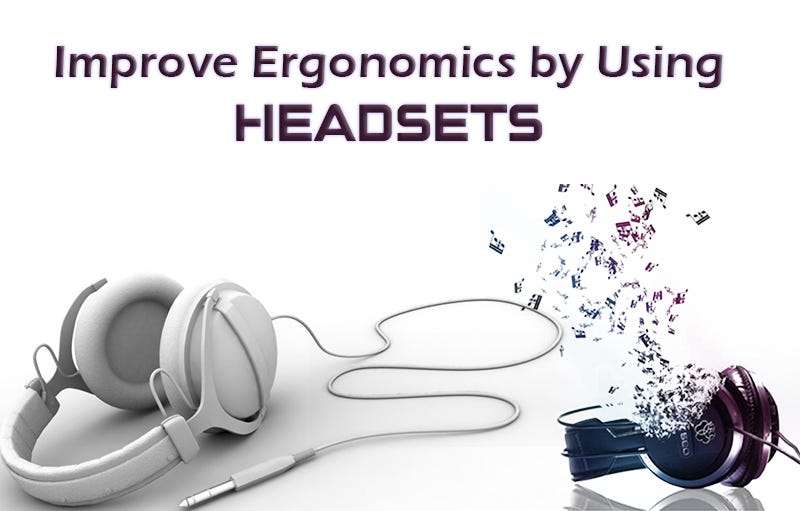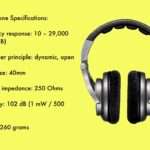In the ever-evolving world of audio technology, comfort often takes a back seat to discussions of sound quality and features. Yet, the significance of headphone ergonomics cannot be overstated. It provides the foundation for a pleasurable and fatigue-free listening experience.
From the contours of ear cups to the weight distribution, each aspect plays a pivotal role in shaping the overall comfort of headphones.
What is Headphone Ergonomics?
Headphone ergonomics encompasses the meticulous design of headphones to ensure they snugly fit the human ear. The primary aim is to mitigate the risk of physical discomfort during prolonged usage. Key considerations in headphone ergonomics include:
- Ear Cup Size and Shape: Adjusting ear cups to fit the ear comfortably without applying undue pressure.
- Headphone Weight: Striking a balance to prevent strain during extended wear.
- Cable Length and Flexibility: Offering freedom of movement without tangling or restriction.
- Headband Pressure: Adjusting headbands to provide a secure yet gentle fit.
- Soft Material Usage: Employing soft materials at contact points to minimize friction and pressure.
The Importance of Headphone Ergonomics
The relevance of headphone ergonomics lies in averting potential physical ailments arising from prolonged headphone usage. Ill-fitting headphones can precipitate various discomforts including ear pain, headaches, neck strain, and even hearing impairment.
- Ear Pain: Caused by excessive sound pressure from ill-fitting ear cups.
- Headaches: Stemming from overly tight headbands.
- Neck Strain: Resulting from the disproportionate weight of headphones.
To mitigate these risks, opting for headphones with superior ergonomics is paramount, particularly for extended use.
Ear Cup Design for Comfort
The design of ear cups is perhaps the most critical factor in headphone ergonomics. The size and shape of the ear cups dictate how they fit around the ears, impacting both comfort and sound quality.

Credit: m.youtube.com
Adjustable Headbands and Clamping Force
Beyond ear cup design, the adjustability of headbands and the judicious application of clamping force are equally critical. An adaptable headband ensures a snug yet comfortable fit, while calibrated clamping force prevents undue pressure.
Weight Distribution and Padding
Weight distribution is another crucial aspect of headphone comfort. Ideally, headphones should distribute weight evenly across the head to prevent pressure points and discomfort. Additionally, the type and quality of padding used in ear cups and headbands can significantly impact comfort levels.

Credit: www.autonomous.ai
Breathability and Heat Dissipation
Breathability is often overlooked but is vital for long-term comfort, especially during extended listening sessions. Headphones with breathable materials and effective heat dissipation mechanisms can prevent sweat buildup and discomfort.
Cable Management and Tangle-Free Design
While not directly related to physical comfort, cable management can affect the overall user experience. Tangled cables can be frustrating and detract from the enjoyment of using headphones. Therefore, designs prioritizing tangle-free cables provide a more comfortable and hassle-free experience.
Noise Isolation vs. Comfort
Balancing noise isolation with comfort is a common challenge for headphone manufacturers. While tight seals provide excellent noise isolation, they can also create discomfort over time. Therefore, finding a balance that ensures adequate noise isolation without sacrificing comfort is essential.
Ergonomic Features in Wireless Headphones
With the rise of wireless technology, ergonomic features have become increasingly important in wireless headphone designs. Manufacturers are incorporating features such as lightweight materials, adjustable headbands, and breathable fabrics to enhance comfort for wireless users.
User Preferences and Customization Options
Recognizing that comfort preferences vary from person to person, many headphone manufacturers offer customization options. Features like adjustable headbands and interchangeable ear pads let users customize their headphones to suit their unique preferences and needs.
Tips for Maintaining Comfort
Even the most comfortable headphones require proper care and maintenance to preserve their comfort over time. Regular cleaning, storage in a protective case, and avoiding extreme temperatures can all contribute to prolonged comfort and durability.
The Future of Headphone Ergonomics
As technology continues to advance, so too will headphone ergonomics. Innovations such as advanced materials, smart sensors, and personalized fit technologies promise to enhance comfort and usability in the future.
Case Studies: Examples of Ergonomic Headphones
To illustrate the principles of headphone ergonomics in action, we’ll explore some popular headphone models known for their superior comfort. By analyzing user feedback and expert reviews, we can gain insights into what makes these headphones stand out in terms of comfort.
Expert Advice on Selecting Comfortable Headphones
Finally, we’ll seek guidance from industry experts on how to choose the most comfortable headphones for your needs. By considering factors such as head size, ear shape, and personal preferences, you can make an informed decision that prioritizes comfort without compromising on sound quality.
The Factors to Consider for Choosing Ergonomic Headphones
Choosing ergonomic headphones can be challenging with so many options available in the market. Here are some factors you should consider when choosing ergonomic headphones:
Ear Cup Size And Shape
The ear cup size should be at least one size larger than the user’s ear to accommodate the ear without compressing it. The shape of the headphone cup should fit the shape of your ear comfortably.
Headband
The headband should be adjustable and fit neither too tightly nor too loosely. A tight headband is uncomfortable and can cause headaches, while a loose headband slips and can cause discomfort and poor sound quality.
Padded Ear Cups
Ear cups should be adequately padded with soft materials to ensure that they don’t cause discomfort. The padding material should provide adequate ventilation to prevent heat and moisture buildup.
Weight
The weight of the headphones can impact extended use. Lightweight headphones are more comfortable and allow for extended use without causing discomfort or pain.




